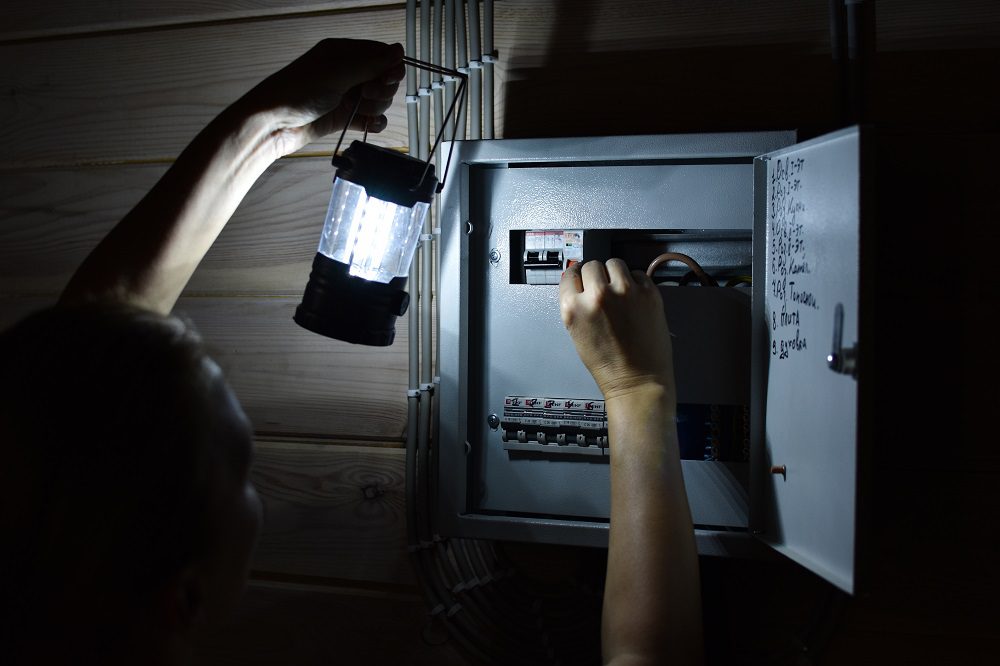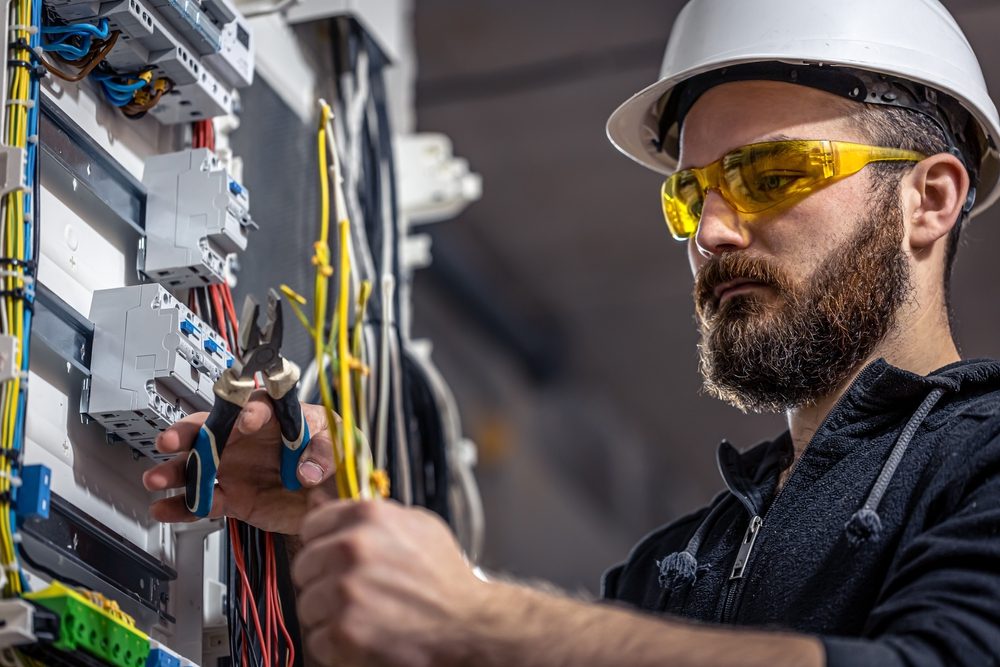
How Much Does It Cost to Fix an Electrical Issue? Can a Handyman Do Electrical Work in NC? The Three Types of Electrical Problems Explained
Homeowners in Charlotte often call after a breaker starts tripping every evening, a light flickers when the HVAC kicks on, or a GFCI won’t reset in the kitchen. The first questions are always the same: what will this cost, and can a handyman handle it? Here is a clear, local answer based on daily field experience across Charlotte neighborhoods from Dilworth and Plaza Midwood to Ballantyne, Steele Creek, and University City.
What electrical repair costs look like in Charlotte, NC
Pricing depends on the fault, access, parts, and safety requirements under the North Carolina Electrical Code. Simple fixes land in the low hundreds. System upgrades and troubleshooting inside finished walls can run higher. Most homeowners fall into one of these ranges:
Small repairs. Replacing a bad switch, outlet, or light fixture typically runs $125 to $350 per device, including parts and labor. A GFCI outlet usually falls between $150 and $225. If neutrals are shared or the box is undersized, allow extra time and parts.
Troubleshooting and circuit issues. Tracking a dead circuit, fixing a loose neutral, or resolving nuisance tripping generally costs $250 to $600 depending on diagnosis time and whether we must trace multiple junction boxes or attic runs.
Dedicated circuits and appliance hookups. Adding a 20A kitchen circuit, a 30A dryer circuit, or a 240V EV charger line usually ranges from $450 to $1,800. Distance to the panel, attic or crawlspace conditions, and drywall work affect the price.
Panel work and service upgrades. Replacing a failing breaker or installing an AFCI/GFCI combo breaker runs $175 to $350 each, depending on brand. Full panel replacements in Charlotte commonly range from $2,200 to $4,500. A service upgrade to 200A can range from $3,500 to $6,500 when utility coordination, grounding, and permits are required.
Lighting projects. Converting can lights to LED, adding dimmers, or installing kitchen under-cabinet lights usually falls between $200 and $1,200 depending on count and access. Exterior floodlight replacements or ring-flood combos generally cost $175 to $450 per head.
Emergency calls. After-hours or urgent same-day electrical repair in Charlotte typically carries a diagnostic fee of $125 to $225, credited toward the fix. Safety hazards take priority, and parts availability can affect same-day completion.
Ewing Electric Co always prices after a live diagnosis. The tech shows the fix, the code requirements, and the options. No work starts until the homeowner approves the number.
Can a handyman do electrical work in North Carolina?
For anything beyond the most basic replacement-in-kind tasks, North Carolina requires a licensed electrician. The line is clear once a repair touches the fixed wiring system, a panel, a breaker, or safety devices like GFCIs and AFCIs. If a job involves new wiring, new circuits, service equipment, or code compliance, a handyman is not the right choice.
Charlotte permitting and inspections rely on licensed electrical contractors for a reason. Insurance coverage and warranties can be denied after unlicensed work, and resale inspections often flag handyman wiring. Ewing Electric Co sees this weekly: taped splices buried behind drywall, reversed polarity on multiple outlets, or a dryer circuit wired with the wrong gauge. The short-term savings vanish once the work has to be redone to code.
For lamp rewiring, swapping a like-for-like light fixture on an existing box, or installing smart switches that do not change wiring methods, a skilled handyman may handle it. For everything tied to fixed wiring and safety, hire a licensed electrician.
The three types of electrical problems a Charlotte home usually has
Most issues fit into three buckets: load-related, connection-related, and protection-related. Knowing which bucket you are dealing with helps set expectations on cost and urgency.
1) Load-related problems
These show up when demand exceeds the circuit’s capacity or when large appliances start up. Signs include breakers tripping when the microwave and toaster run together, lights dimming when the heat pump starts, or a warm faceplate on a heavily used kitchen outlet.
Common Charlotte examples include older bungalow kitchens still running on one or two 15A circuits, bonus rooms added over garages with space heaters, or garage freezers sharing a GFCI with exterior outlets. The fix often involves adding a dedicated circuit, balancing loads across phases, or installing soft-start kits on HVAC equipment per the manufacturer.
Costs range from a simple breaker swap and load balancing at $150 to $300, up to $450 to $1,800 for a dedicated circuit. Expect higher costs if walls or exterior conduit runs are required.
2) Connection-related problems
Loose terminations, backstabbed outlets, and corroded splices cause flicker, heat, and intermittent power loss. These are common in homes from the 1970s and 1980s that used backstabbed receptacles, and in crawlspace or porch junctions where moisture sneaks in. A single loose neutral can make multiple rooms flicker when another circuit is used.
Symptoms include random dimming, buzzing at a switch, or a warm outlet with no heavy load. The electrician traces the circuit, checks terminations in the panel and devices, and replaces weak devices with properly torqued screw-terminal connections. Aluminum branch wiring in some older neighborhoods needs CO/ALR-rated devices or approved connectors.
Plan on $250 to $600 for diagnosis and targeted repairs. Larger homes or long multi-branch runs can take longer, which increases cost.
3) Protection-related problems
Protection devices fail or trip for legitimate reasons. AFCI and GFCI breakers can wear out, or they trip because of wiring issues they are meant to catch. Kitchens, baths, laundry areas, garages, and exterior outlets around Charlotte require GFCI protection. Many bedrooms and living areas require AFCI protection under current code.

If a GFCI will not reset, or an AFCI trips with no heavy load present, a ground fault or series arc could be present. Sometimes the fix is as simple as replacing a defective device. Other times, the electrician isolates a damaged cord cap, a leaky exterior box, or a bootleg neutral. For homes with remodels across decades, mixed wiring methods can confuse protection devices until corrected.
A GFCI replacement usually lands at $150 to $225. AFCI or dual-function breaker replacements run $200 to $350 each. If the trip is caused by wiring faults, allow for diagnostic time.
How Ewing Electric Co approaches electrical repair in Charlotte
electrical repair serviceThe team treats every service call like an investigation. First, they interview the homeowner. When did the problem start? What changed recently? Did a storm roll through South End last week? Next, they test the affected circuit with a meter and breaker analyzer. They open suspect devices, verify torque at terminations, and inspect the panel for heat marks or corrosion. When a problem sits behind drywall, they use existing junction boxes and attic or crawlspace access to limit repairs to the least invasive path.
Clear communication matters. If a GFCI keeps tripping in a garage in Matthews after a rainstorm, the tech shows the moisture inside the exterior box. If a load problem appears on a kitchen circuit in Myers Park, they explain how a new 20A line will stop the nuisance trips and document it on the estimate. Every repair ties back to safety, reliability, and code.
What to do right now if you suspect an electrical hazard
- Turn off and do not use the affected outlet, switch, or circuit. If you smell burning or see smoke, shut the main breaker and call.
- Do a quick check for patterns. Note which appliances were running, which rooms went out, and any recent work or storms.
Those two steps help the electrician diagnose faster and save you money on labor.
How neighborhood factors affect cost and timing
Homes in older Charlotte neighborhoods like Elizabeth and Wilmore often have tight plaster walls, limited box depth, and mixed wiring. Expect longer diagnostic time. Newer homes in Ballantyne and Highland Creek sometimes require AFCI and GFCI coordination across multiple breakers, which can increase material cost but shortens future troubleshooting. Crawlspaces in Steele Creek or Mint Hill can add time if access is restricted or insulation is wet.
Exterior work varies with wall type. Brick veneer needs a different approach for new circuits than vinyl siding. Townhomes and condos may need HOA approval and specific fire-rated boxes. Ewing Electric Co handles those details in the estimate phase to avoid surprises.
Frequently asked questions on electrical repair Charlotte homeowners ask
Is a breaker that feels warm normal? Slight warmth under load can be normal. Heat that is uncomfortable to touch signals a problem and needs inspection.
Do LED flickers always mean bad wiring? Not always. Some dimmers are not compatible with certain LED drivers. Swapping to a listed dimmer often fixes it. If not, check for a loose neutral.
Are permits required for small repairs? Replacing devices in kind usually does not need a permit. New circuits, panels, and service work do. Ewing Electric Co pulls permits where required and coordinates inspections with Charlotte-Mecklenburg.
How long does a typical repair take? Many small repairs take under two hours. Circuit tracing or multi-point faults can take half a day. Panel work often completes in one day with power back on by evening.
Why a licensed electrician protects your home value
Home inspectors in Charlotte are quick to flag handyman wiring. Double-tapped breakers, missing GFCI protection in kitchens and baths, bootleg neutrals, and non-rated back boxes all show up in reports. That list becomes negotiation leverage for buyers. Doing the repair right the first time protects resale value and reduces insurance risk.

Ewing Electric Co documents repairs with photos, provides labeled panels, and leaves a copy of the permit or inspection results when applicable. That paper trail keeps transactions smooth.
A few real field examples
A SouthPark homeowner reported dimming lights whenever the oven preheated. The panel showed a loose neutral on the circuit feeding kitchen lighting. The repair took 90 minutes including retorquing terminations, and the invoice landed at $265.
In NoDa, a garage GFCI tripped after every rain. The exterior flood box was missing an in-use cover and the gasket had failed. Replacement of the box, a new in-use cover, and a new GFCI receptacle fixed the nuisance trips for $235.
A Plaza Midwood bungalow had a breaker tripping nightly when the space heater ran in a sunroom. The room shared a bedroom circuit from the 1950s. Ewing added a dedicated 20A circuit and AFCI protection for $1,150, including attic fishing and patch-ready holes.

Ready for safe, code-compliant electrical repair in Charlotte?
If a breaker keeps tripping, a GFCI will not reset, or lights are flickering, it is time for a licensed electrician. Ewing Electric Co serves Charlotte, Matthews, Pineville, Huntersville, and nearby areas with same-week scheduling and clear pricing. Call or request service online for electrical repair Charlotte homeowners trust. The team will diagnose, explain options in plain language, and complete the fix to code.
Ewing Electric Co provides dependable residential and commercial electrical services in Charlotte, NC. Family-owned for over 35 years, we handle electrical panel upgrades, EV charger installation, generator installation, whole-home rewiring, and 24/7 emergency repairs. Our licensed electricians deliver code-compliant, energy-efficient solutions with honest pricing and careful workmanship. From quick home fixes to full commercial installations, we’re known for reliable service done right the first time. Proudly serving Charlotte, Matthews, Mint Hill, and nearby communities. Ewing Electric Co
7316 Wallace Rd STE D Phone: (704) 804-3320 Website:
https://ewingelectricco.com/ |
Google Site
Social:
Facebook |
Instagram |
Twitter
Map: View on Google Maps
Charlotte,
NC
28212,
USA